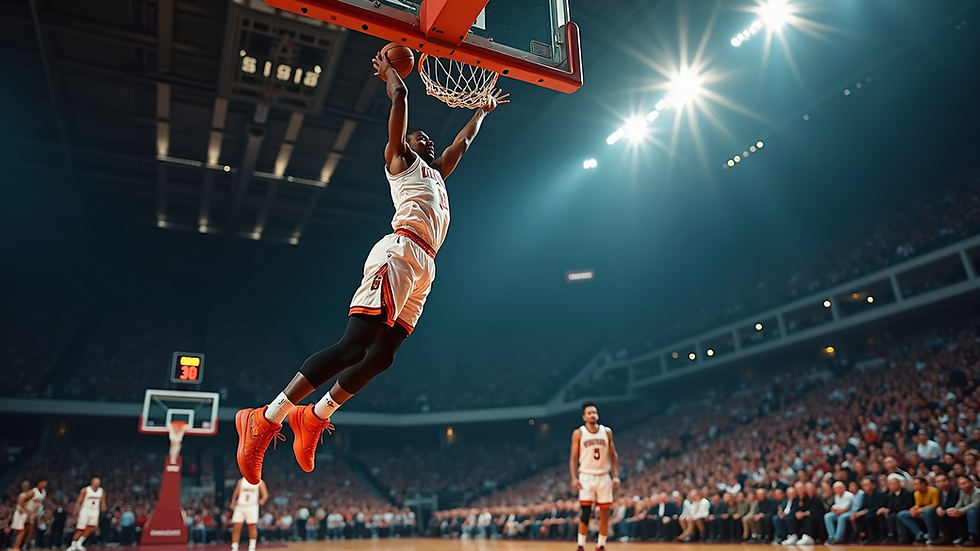Capture the Action: Professional Sports Photography
- S Padua
- Sep 26
- 4 min read
Capturing the intensity and excitement of sports requires more than just a camera. It demands skill, timing, and an understanding of the game. Professional sports photography is an art that freezes moments of peak action, emotion, and athleticism, allowing fans and athletes alike to relive those unforgettable instances. Whether it’s a fast break in basketball, a powerful serve in tennis, or a sprint to the finish line in track, the right photograph tells a story that words cannot.
The Essentials of Professional Sports Photography
To excel in professional sports photography, understanding the fundamentals is crucial. The fast-paced nature of sports means photographers must anticipate moments before they happen. This requires knowledge of the sport’s rules, player tendencies, and key moments that define the game.
Key equipment and settings include:
Fast lenses: Apertures like f/2.8 or wider allow more light, enabling faster shutter speeds.
High shutter speed: To freeze motion, shutter speeds of 1/1000 second or faster are often necessary.
Continuous shooting mode: Captures multiple frames per second to increase the chance of getting the perfect shot.
Autofocus tracking: Keeps moving subjects sharp and in focus.
For example, a soccer photographer might use a 70-200mm lens to capture close-up action from the sidelines, while a basketball photographer might prefer a 24-70mm lens for versatility inside the arena.

Mastering the Art of Timing and Composition in Professional Sports Photography
Timing is everything in sports photography. The difference between a good photo and a great one often comes down to capturing the exact moment of peak action. This could be the instant a basketball player releases a shot, a football player making a tackle, or a runner crossing the finish line.
Tips for mastering timing and composition:
Know the sport: Understanding when key moments happen helps anticipate shots.
Use burst mode: Shoot in rapid succession to capture a sequence of action.
Focus on the eyes: When photographing athletes, sharp eyes create a powerful connection.
Frame for impact: Use the rule of thirds to place the subject off-center, creating dynamic images.
Include context: Show the environment, such as the crowd or stadium, to add atmosphere.
For instance, capturing a gymnast mid-air with the crowd blurred in the background can convey both skill and excitement.

Choosing the Right Gear for Every Sport
Different sports require different photographic approaches and equipment. Understanding these nuances ensures you are prepared to capture the best images regardless of the event.
Outdoor sports: Sports like soccer, football, and baseball often require weather-resistant gear and longer lenses to cover large fields.
Indoor sports: Basketball, volleyball, and gymnastics need lenses with wide apertures to compensate for lower light.
Motorsports: High shutter speeds and panning techniques are essential to capture fast-moving vehicles.
A professional photographer might carry multiple camera bodies with different lenses attached to switch quickly between wide-angle shots and tight close-ups.

Enhancing Your Sports Photography with Post-Processing
Post-processing is a vital step in professional sports photography. Editing software allows photographers to enhance colors, sharpen details, and crop images for better composition.
Effective post-processing techniques include:
Adjusting exposure and contrast: To make the subject stand out.
Sharpening: To emphasize details like muscles or facial expressions.
Cropping: To remove distractions and focus on the action.
Noise reduction: Especially important for images taken in low light.
For example, increasing the contrast in a photo of a runner can highlight sweat and muscle definition, adding to the intensity of the image.
Why Hire Professional Sports Photography Services?
Hiring sports photography services ensures you get high-quality images that capture the spirit of the game. Professionals bring experience, the right equipment, and an eye for detail that amateurs often lack. Whether for marketing, personal keepsakes, or media coverage, professional photos elevate the presentation of any sporting event.
Professional photographers also understand how to work with event organizers, athletes, and media to deliver images that meet specific needs and deadlines.
Tips for Aspiring Sports Photographers
If you want to break into sports photography, start by practicing at local games or school events. Here are some actionable tips:
Learn your camera inside out: Know how to quickly adjust settings on the fly.
Scout locations: Find the best vantage points before the game starts.
Be patient: Wait for the right moment rather than shooting continuously.
Build a portfolio: Share your best work online to attract clients.
Network: Connect with teams, coaches, and other photographers.
With dedication and practice, you can develop the skills needed to capture stunning sports images.
Capturing the Spirit of the Game
Professional sports photography is about more than just action shots. It’s about telling a story - the determination, the triumph, the heartbreak. Every photograph should convey the emotion and energy that make sports so compelling.
By combining technical skill with creativity, photographers can create images that inspire and engage audiences long after the final whistle.

Embrace the challenge of capturing the action and bring the excitement of sports to life through your lens.



Comments